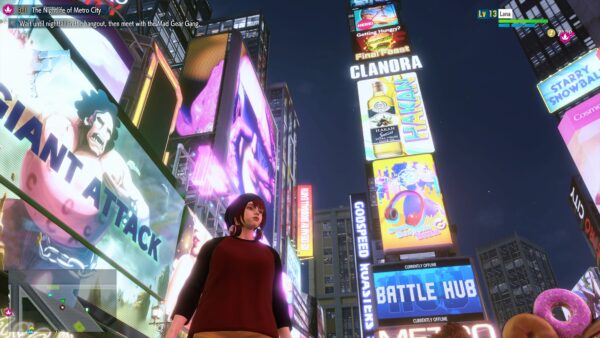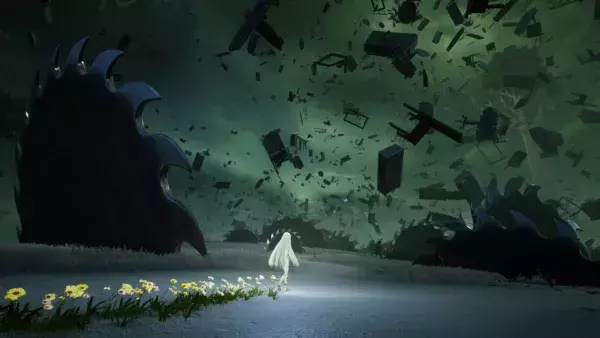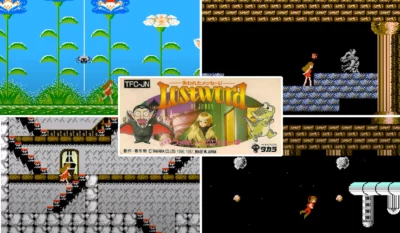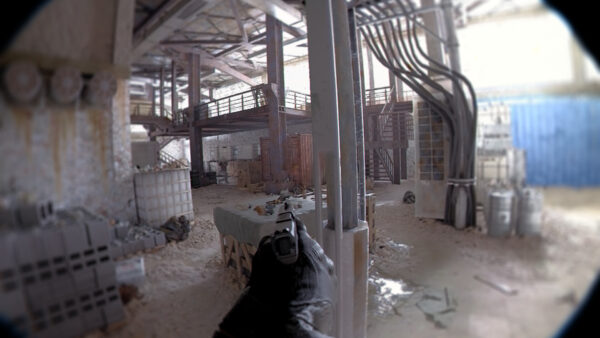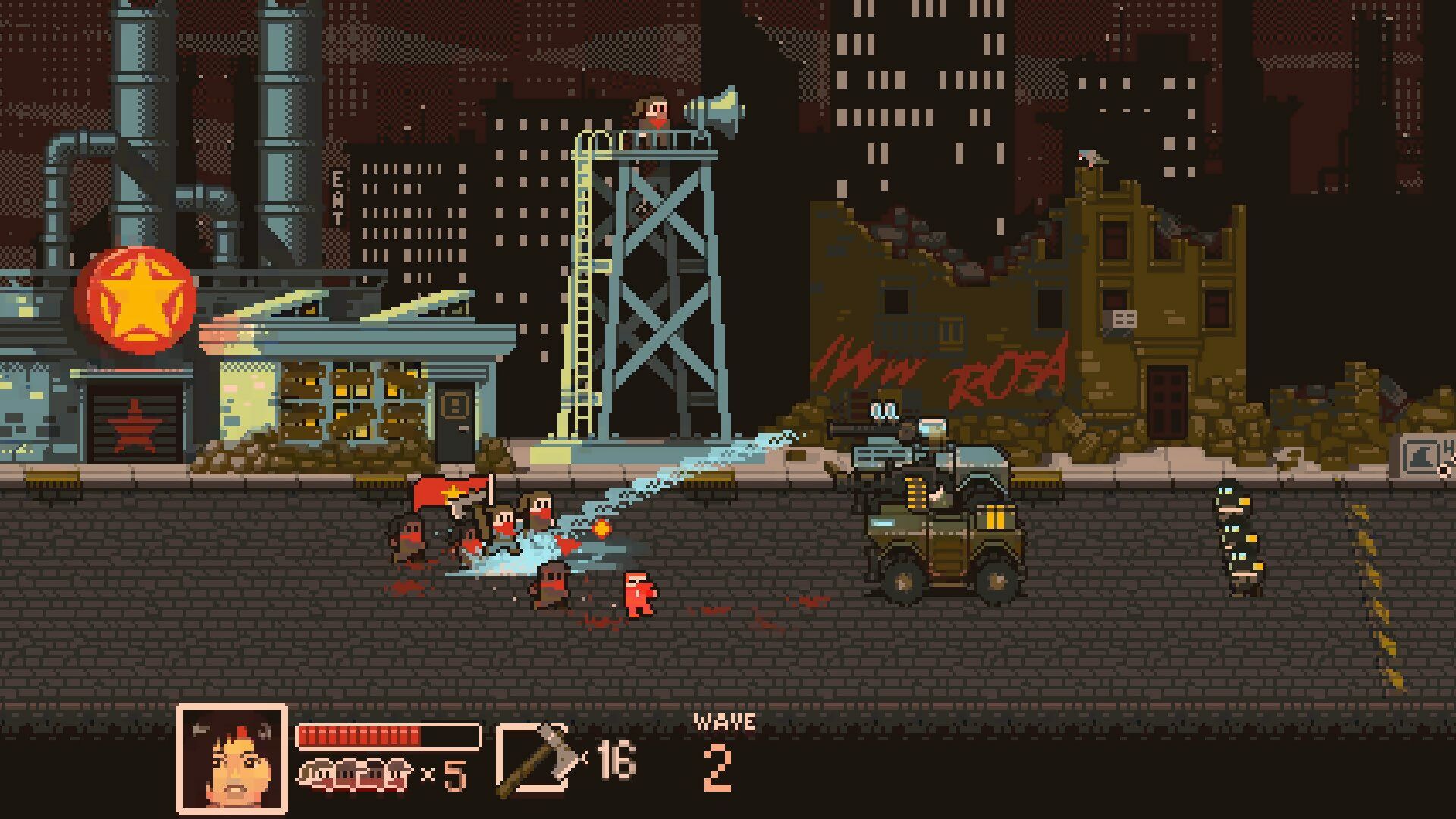
Mindless mobs, extreme violence: the depiction of riot and resistance in video games provides an illuminating glimpse into how we understand them on a cultural level. Triple-A developers tend to centre their stories on lone heroes versus cartoonish bogeymen, and where meaningful change is only brought about through violence. The reality of these movements is, however, far less straightforward, and these stories of demonstrations and defiance deserve to be portrayed in their full complexity.
Few moments in recent history have challenged our collective assumptions around riot and resistance quite like the uprisings in America, which erupted in the summer of 2020. The protests began after George Floyd, an African American from Minnesota, was murdered by a policeman. Floyd was another in a long list of Black victims of police violence, and his death sparked one of the largest waves of protests in US history.
The demonstrations continued into the winter, bringing the issue of police brutality into sharp focus, and also the disparity between how resistance is commonly portrayed and what it actually involves. While resistance is a common issue across all forms of media, the way it manifests in video games is a strange distortion that speaks to our individual sense of powerlessness; whether it’s through offering overly simplistic solutions to complex problems or excusing us of personal responsibility.
What we see
Dr Alfie Bown is a lecturer in digital media, culture and technology at Royal Holloway, University of London. As he notes, there is an interesting parallel here between how the media views both video games and riots. “Video games are specifically important when it comes to the depiction of riots, precisely because of how our media – and particularly a kind of mainstream centrist media – always wants to depict riots as mindless and violent,” he says. “For those of us who care about them and think about them carefully, we do not think of video games as mindless or associated with violence.
“But by having this kind of connection between video games and riots, there’s nevertheless a sense in which these things are cast as play, or as an outlet for frustrations; as mindless button-bashing. In many ways, the government and the media want to see actual rioters as bad, mindless button-mashers. And actually, they’re not; they’re very organised, coherent symptoms of the frustrations with capitalism and neo-liberalism.”
Portraying riots as a mindless mob also ignores the ideological underpinnings of such movements, and downplays the context of wider resistance, solidarity, and police violence from which riots emerge. Indie developer Leonard Menchiari looked to address some of these elements in his game Riot: Civil Unrest. The game revisits famous riots from recent history – such as the Arab Spring, the No TAV riots in Italy, and the Indignados movement in Spain – from the perspective of both protesters and police.
In researching the game, Menchiari attended multiple protests around the world. “Each nation has its own problems, and each culture has its own ways of dealing with them,” he says. “The one thing in common to all events is that you do start to understand the difference between being an individual and being part of a much bigger collective organism: the crowd.”

In Watch Dogs: Legion, players enter a rather banal dystopia, where many don’t even bother to protest.
What sets Riot: Civil Unrest apart, however, are the moments before the riots, which show the protesters as people. In the opening cutscene of the No TAV campaign, we can see protesters scouting police movements and using fireworks to signal warnings to their comrades whose camp is about to encounter riot police. In later scenes, protesters are shown gathered around a bonfire late at night before waking up on the cold tarmac of a blockaded highway, steeling themselves for another long day on the front line. The scenes are quietly powerful, displaying the dedication and ingenuity of resistance movements.
“The cutscenes are based on things that actually happened,” says Menchiari. “Each event represents situations I have seen personally, or that I selected through videos and research from people who experienced [them] first hand.”
The hero myth
Notions of exceptionalism are rife in history. Be it the unfaltering leadership of Winston Churchill or the divine wisdom of the founding fathers, the popular view of these figures reveals how we latch onto stories of supposedly exceptional individuals. But these classic hero myths undermine the bravery and sacrifice of everyday people. The comforting lie that we’re not personally equipped to save the day helps these stories soothe our sense of powerlessness.
Games tend to feed this myth. Quantic Dream’s Detroit: Become Human is a particularly egregious example. Falsely accused of murder, android Markus finds himself among a group of outcast non-humans existing on society’s fringe. But following his arrival, the androids form a resistance under his leadership, and Markus becomes a messianic figure on whom the resistance is entirely dependent. “You’re the only one who can lead us!” says a fellow android, “If you die, our cause dies with you.”

Leonard Menchiari used second-hand accounts and personal experience to accurately recreate riot scenes in Riot: Civil Unrest.
The parallels between the American civil rights movement and the plight of androids in Detroit are less than subtle. Quantic Dream employs police violence, segregation, and oppression of an underclass as themes in common, but paints it as a story of a heroic martyr and his band of followers, rather than a collective movement. Ultimately, the android fight for freedom boils down to a few violent clashes with police, and posits that the androids would be powerless without their leader.
Peter Ó Máille is an activist and organiser with the Anarchist Federation. He argues that this reflects media portrayals of such movements, which “reduce the narratives of millions to a handful of paragons”.
“Activism and organising are almost always universally broad spectrum movements with any of dozens of focal points for organising and informal leadership,” he says. “It is the combination of ordinary folk, working together and creating extraordinary results, usually through the idea of political unity and a diversity of tactics as appropriate.”
Merit and carnage
Watch Dogs: Legion presents usurping an authoritarian regime as a fun romp; tear down propaganda, expose a few war crimes, and hack a government database or two – usually leaving a pile of bodies behind. As Bown notes, games favour the idea of resistance-as-destruction, rather than resistance-as-organising, and Legion replicates this idea; a tendency born from what’s believed will create a fun player experience.

Leonard Menchiari being arrested by riot police during the No TAV protests.
“I think it’s assumed that blowing up a building is inherently fun and that organisation would be less so, but in fact, I doubt that this is true,” says Bown. “There are only so many buildings I can be bothered to explode; I’m sure other players feel the same. Perhaps games need to start showing resistance-as-organising.”
On the surface, Legion attempts to capture these ideas of organisation and solidarity, placing emphasis on recruiting ‘everyday people’. But the decision to forgo a traditional protagonist in favour of its titular legion is ultimately a gimmick that falls well short. Each operative exists in their own bubble, working at the behest of an exceptional AI, and never collaboratively with other members.
Additionally, Legion punishes the player for recruiting any characters other than the most skilled and best-equipped, and downplays the sort of intersectional solidarity that is common in effective uprisings. The end result is one in which the fight for London’s freedom from corporate tyranny is played out through isolated vignettes, and relies on a handful of exceptional people. Bown, who appears in Legion on the in-game radio station discussing the machinations of fascism, highlights how defaulting to the exceptional is a “typical feature of games”, and that even when they’re ostensibly critical of oppressive systems, they tend to reinforce toxic notions around self-worth and individual merit.
“Superficially, [Legion] looks like a diverse and intersectional thing,” he says. “But essentially… it’s not dreaming of a different kind of social organisation at all.” Throughout Legion, acts of resistance are typically about high-level espionage or brute force. There are glimpses of wider resistance and organising, seen in food banks and poorly attended protests across London; you’re usually foiling devious plots that threaten to turn your nan into a computer or put surveillance drones in your cornflakes.

In Detroit: Become Human, Markus embodies the myth of a hero and a martyr.
Video games are far too attached to these ideas of resistance, says Bown. While he points out that some missions in Legion, like tearing down propaganda, recognise the city as a “symbolic space to be fought over”, it also embodies establishment perceptions of resistance as violent and mindless through its focus on action and lack of ideology beyond restoring the status quo; something which politicians and anarchists alike are apparently united on in this universe. “It’s perhaps a marker of the frustration we have with this form of neo-liberal capitalism that we want to see it explode but struggle to articulate alternatives,” says Bown.
A riotous alternative
Tonight We Riot, from Texas-based Pixel Pushers Union 512, meanwhile, depicts a worker-led revolution against the oppressive capitalist system. The pixel-art game sees you play as a riotous collective, brawling through the capitalist machine like Pikmin in revolt.
“We wanted to make sure every player knew they were a part of a group – that they, their friends, neighbours, and fellow workers were all heroes in their own right, and doing whatever they could in order to make a movement that can sustain itself under withering abuse and assault,” says Ted Anderson, a member of the worker-owned cooperative studio.
By presenting relatable problems like “a crappy job, low pay, struggling to make ends meet [and] being tired constantly”, Tonight We Riot translates these issues into a narrative that fights against real-world injustices of worker exploitation and wealth disparity. From there, it offers a solution: fight back in solidarity with those in similar circumstances. While it still leans on a power fantasy, it does so through the perspective of power as collective action.
“We wanted to show that no singular person causes a revolution, and that everyone has a part to play – often small, almost never solely on the streets, but also valuable in their own ways,” says Anderson.

Direct action in Watch Dogs: Legion is, ultimately, to re-establish the status quo rather than to effect change.
Resistance-as-organising
By casting our net wider than the triple-A gaming space and mainstream media, we can see a more complete picture of what resistance looks like. It’s about organising and building intersectional solidarity rather than unleashing destruction. In reality, the notion that resistance is destructive is perpetrated by those who would be swept away by it.
This year in Poland, following a court ruling which rolled back women’s reproductive rights, women across the country went on strike. The government claimed the decision could not be reversed, and protests were framed as an attempt to “destroy” Poland. After just two weeks, the government delayed implementation of the ruling and Poland still exists.
After the UK government announced it would not be extending support to feed underprivileged children during the coronavirus pandemic, people immediately took action. Local businesses began offering free meals to children, and protesters carried out stunts like leaving plenty of empty plates outside the offices of those who had voted in favour of the cuts. Combined with support from celebrity activists like Marcus Rashford, the government reversed its decision and extended meal support.
Neither of these examples are glamorous, and don’t have much place in a video game about shooting and hacking your way across London, but the point is to demonstrate that effective resistance is never the result of an individual, and acts of defiance are born from people united in spontaneous solidarity. While Rashford will be labelled a hero, it was local communities jumping in to provide immediate aid. Resistance is empowering, collaborative, diverse in tactics, and something anyone can participate in.
Ó Máille, meanwhile, argues hero narratives send a message that “you at home aren’t this exceptional… It does little but reduce social change to a distant fantasy about as viable as riding into battle with your elven pal on the back of a warg.

Tonight We Riot is unapologetic in its politics: pro-worker, pro-people, anti-billionaire. It’s also a fair bit of fun, helpfully.
“The Black Panthers were so successful because they fed the kids and gave educational programs,” he continues. “In the UK, some 400 mutual aid networks sprang up at the start of Covid, and workplace solidarity expanded. Real social change and pretty much every revolution has been the work of a plethora of individuals and ‘forgotten voices’.”
Unless a game is focused solely on telling a story of uprising, developers are bound to take shortcuts in how these themes are depicted. Revolutions are years in the making: that’s hard to convey in a 20-hour game. But what we see in most games is less a shortcut and more repaving of the roads. As French philosopher Guy Debord wrote in The Society of the Spectacle: “The media interprets (and reduces) the world for us with the use of simple narratives.”
But how can game developers look to employ themes of resistance in an effective and representative way? Through city-building games that don’t “lean heavily on capitalism and settler/colonial ideology”, Anderson suggests. Menchiari, meanwhile, encourages developers interested in riots to “go and see things with their own eyes”, because it’s more than just a “violent punk with a bandana throwing Molotovs… In riots, there is no specific stereotype, as the crowd is made of every kind of person, of every age, every race and gender, with one thing in common: anger towards lies and injustice.”
If the purpose of art is to reflect some truth about humanity, modern games show us very little when it comes to oppression and resistance. In the context of oppression, the typical hero/power fantasy narrative builds an unscalable wall around ideas of resistance, and strips the stories of their real power. Games teach us that only mythic individuals can achieve change, and we internalise that myth. Fighting oppression becomes the responsibility of someone else, because we lack the exceptional heroism and leadership required. That’s a lesson we need to unlearn.


